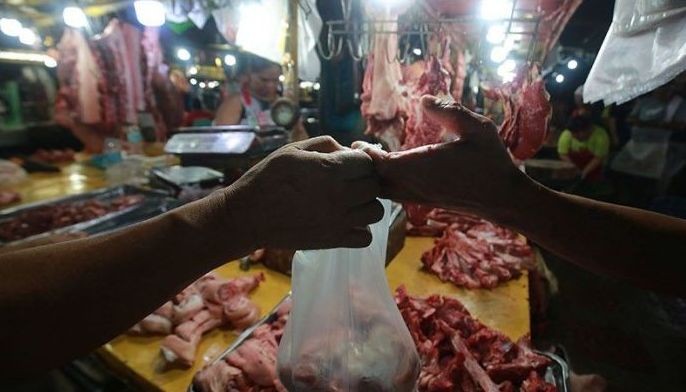BSP chief: June inflation a 'setback'
MANILA, Philippines — The overall increase in prices of key consumer items spiked to a fresh five-year high in June, beating the central bank’s forecast for the month and market estimates.
Inflation accelerated to 5.2 percent in June from May’s 4.6 percent. Year-to-date, inflation averaged 4.3 percent, above the Bangko Sentral ng Pilipinas’ 2-4 percent target range.
Related Stories
The central bank had expected inflation to settle within 4.3-5.1 percent range in June while market watchers had projected an inflation rate of 4.8 percent.
Broken down, the higher-than-expected price hikes in June was driven by a surge in prices of alcohol and tobacco (20.8 percent), transport (7.1 percent) and food (6.1 percent).
In a statement, BSP Governor Nestor Espenilla said the central bank “reaffirms” its commitment to bring inflation back on target “as soon as possible.”
“Higher-than-expected June inflation outcome is a setback. We will review and update our situational assessment and forecast inflation path,” Espenilla said.
“This will shape the strength and timing of our next monetary policy response to firmly anchor inflation expectations,” he added.
People have blamed soaring prices on the Duterte administration’s Tax Reform for Acceleration and Inclusion law, which lowers personal income taxes while raising excise levies on fuel and “sin” products, among others.
Supply-side factors like higher global oil prices—worsened by the continuing depreciation of the peso—are also pushing up commodity prices.
Rate hike calls mount
In a bid to fight inflation and strengthen the local currency, the BSP has introduced back-to-back rate hikes this year. But analysts say more monetary policy actions are necessary to temper inflation.
The central bank has admitted it might miss its target as inflation is projected to average 4.5 percent in 2018, amid risks posed by “second-round” pressures from expected higher minimum wages and public transport fares. But policymakers have vowed to put inflation back on target next year.
“The BSP is behind the curve. Inflation accelerated past target, again. Meaning that it needs to do more to cool an overheating economy,” Trinh Nguyen, senior economist at Natixis, said in a commentary.
“Not only do we have loose monetary policy (real rates low), fiscal policy is also lax. Trade deficit wider,” she added.
Separately, Ruben Carlo Asuncion, chief economist at Union Bank, said the BSP may adjust key rates anew in its next meetings.
“I expected a 4.7 percent on the back of slowing month-on-month momentum. However, I have not discounted another rate hike by next meeting and possibly another one by the end of the year based on how inflation eventually behaves,” Asuncion said.
“This 5.2 percent is higher-than-expected. Nobody in the survey I think expected this. Moving forward, inflation expectations must be anchored accordingly,” he added.
Meanwhile, analysts at Nomura said headline inflation will likely peak only around August or September, before gradually easing from there.
“That said, we believe the risks around our CPI (consumer price index) forecast may now be tilted more to the upside because of upcoming supply-side factors, such as impending increases in power rates and the impact of a higher coal tax,” Nomura said in a research note.
“We believe inflation expectations are also likely to rise further, as evident in rising demand for wage increases,” it added.
Monetary authorities will meet again in August to review policy settings. — with a report from BusinessWorld


